#Peter zummo
Photo
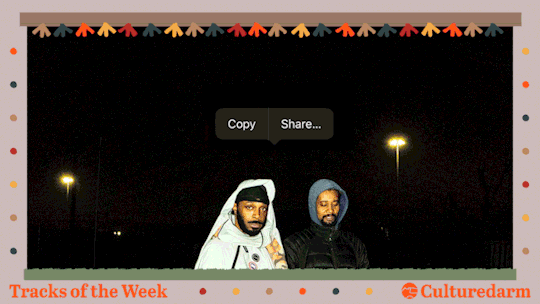
Natalie Merchant and Abena Koomson-Davis implore the goddess Aphrodite, caustic collaborators JPEGMAFIA and Danny Brown reference the TikTok bodybuilder leanbeefpatty, as Hourloupe the duo of Frank Menchaca and Anar Badalov trek the Wawayanda, while redolent of Objects for an Ideal Home by Opiate, the South London artist JQ finds frolic in a seam of cultural detritus, like the aisles of a Quick Save on a Monday or the taste of an ice rink Slush Puppie as the tongue clicks in the roof of the mouth from brain freeze. Plus tracks by Sofia Kourtesis, Peter Zummo, Vladislav Delay, Teen Prime, and Kedr Livanskiy with Flaty as Kosaya Gora.
https://culturedarm.com/tracks-of-the-week-18-03-23/
#music#new music#best new music#tracks of the week#natalie merchant#danny brown#jpegmafia#hourloupe#anar badalov#frank menchaca#jq#peter zummo#sofia kourtesis#house#electronic#math rock#jazz#indie#vladislav delay#kedr livanskiy#flaty#kosaya gora#dream pop#folk#experimental#ambient#noise
4 notes
·
View notes
Text
Peter Zummo, "Highway Brain Planet (Credits)"
#NowPlaying
0 notes
Text
Albums of 2023 part 1
OK I started a best albums of 2023 thread as there's lots that got missed out of charts I contributed to. I got carried away and there's nearly 100, but they're all superb and I think there's something for everyone here. Start with this: a DEVASTATINGLY fresh drum'n'bass/jungle excursion from a perpetually underrated UK bass don Altered Natives.

A short but PERFECTLY formed 20 minutes of heavy, trippy R&B with surprise UKG and even drum'n'bass twists, Tinashe deserves so much more credit as an innovator...

I was late to this one but should've known the Hive Mind label always delivers. Swedish-based guitarist Vumbi Dekula delivering track after track of perfection like it's as easy as breathing.
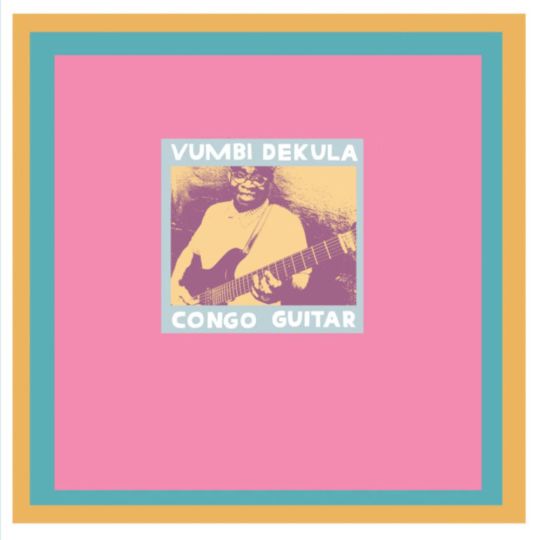
I've always enjoyed Lana Del Rey when she's at her most benzo-haze - and this Mitski album hits that spot perfectly... not that it's all dissociated - it's very smart and sharp - but you can easily drift away into it.
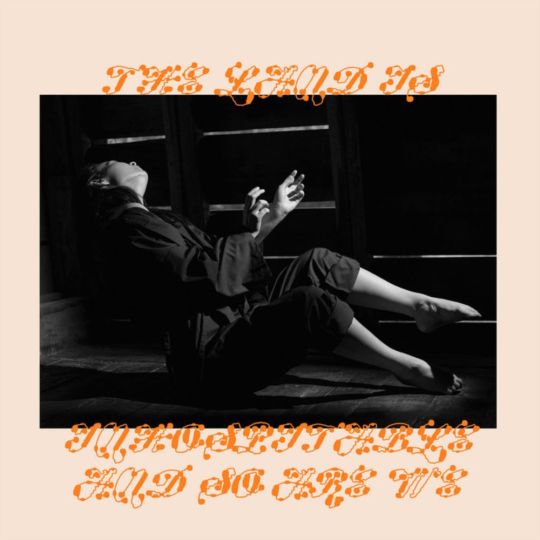
Metallica, Pink Floyd, Fleetwood Mac, Blondie covers in a millennium old Inuit language? Well yes - and in Elisapie's hands it's DEVASTATING. I played the Leonard Cohen one out at 3am in a chillout room in the summer and it was real, REAL magic.

TONN3RR3 & BIKAY3 = French live electronic beats of various flavours + EXTREMELY eccentric Congolese vocalist = braincell-scrambling funtimes...
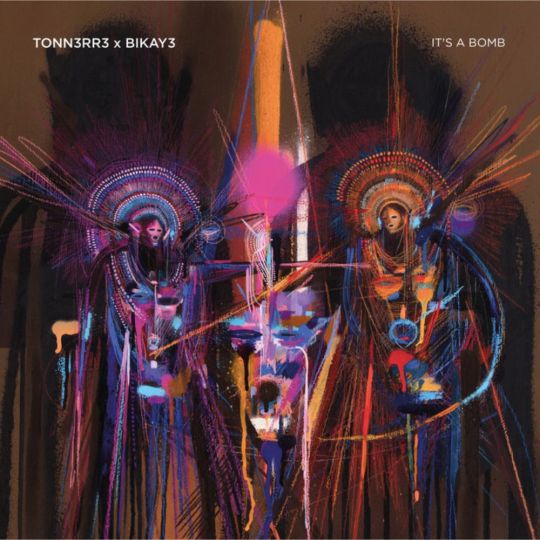
First of two major trip-outs from Optimo Music last year - with Op:l Bastards and then K-X-P, Timo Kaukolampi is best known for motorik cosmic synth rock, but here everything is stripped away except the abstract cosmic, and wow it'll give you vertigo if you let it.

The presence of Peter Zummo here leads to automatic Arthur Russell comparisons for Greek-British brothers áthos - and it's not NOT Arthur-ish.... but more, it's operating in the same boho world of freedom as he did, and finds its own delicate voice within that.
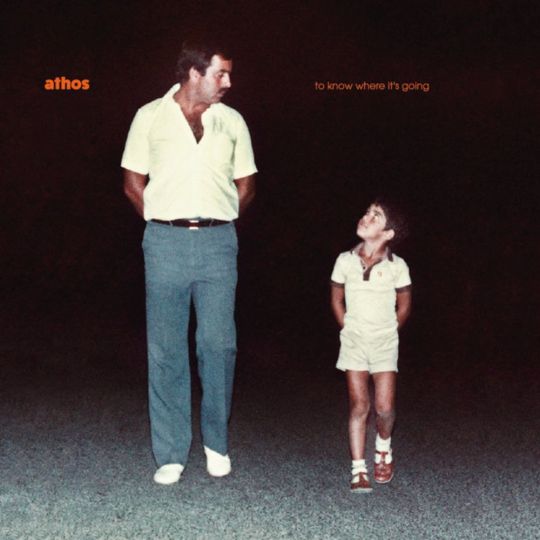
Another massively unsung talent, original Moving Shadow / - now Over/Shadow - crew, half of Mixrace with the mighty Paradox (they also had a great record out this year), Dave Trax makes THE most exquisite soulful but heavy d'n'b and this album is among his best.

Melbourne's always been musically interesting, but this new duo project from a Gorillaz / Genesis Owusu collaborator Mindy Meng Wang 王萌 with Sui Zhen is above and beyond. Sort of fourth world but more advanced (fifth world??), it's a really personal, precise and endlessly fascinating thing.
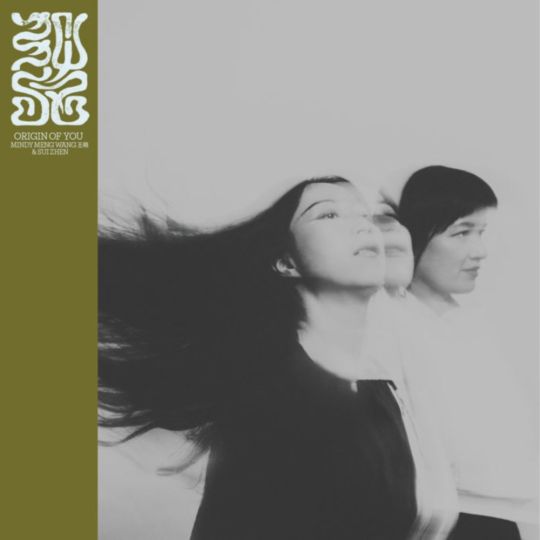
Dunno how Jamal Moss does it so prolifically but consistently: an endless flow of machine funk like a jet of magma from the centre of the earth. Add Polish saxophonist Jerzy Maczynski to the mix making Universal Harmonies & Frequencies, and the results are overwhelmingly ecstatic.

Holmer zooms into the essential something that links Mary Chain, Goldfrapp, Stereolab, Cocteaus and all their influences in turn... a kind of pure essence of motorik, psychedelic, magickal pop..... Such an instant, potent, pleasure-centres hit.

Your favourite DJ's favourite DJ's favourite DJ Jerome Hill is also no shabby producer and every one of these eight tracks is the platonic ideal of a bleeping, clonking, tweaking, hot, sweaty, bassy dancefloor banger.

Need a reminder that it hasn't all been done before in electronic music? TSVI got you covered: this is the FRESHEST gear, but never innovating for innovation's sake - always about emotions & composition first. Includes several Loraine James contributions too \(more to come from her....) ❤️

The kind of drone music that can give you superpowers if you make space to really soak it in. Kali Malone x Lucy Railton x Stephen O'Malley = AVENGERS ASSEMBLE!

The Magic Numbers pretty much passed me by, but this solo album from the band's Michele Stodart is the epitome of Soft Music For Hard Times, real quiet dignity stuff, beautiful subtlety to production/arrangment and just the kind of countrified songwriting I adore.
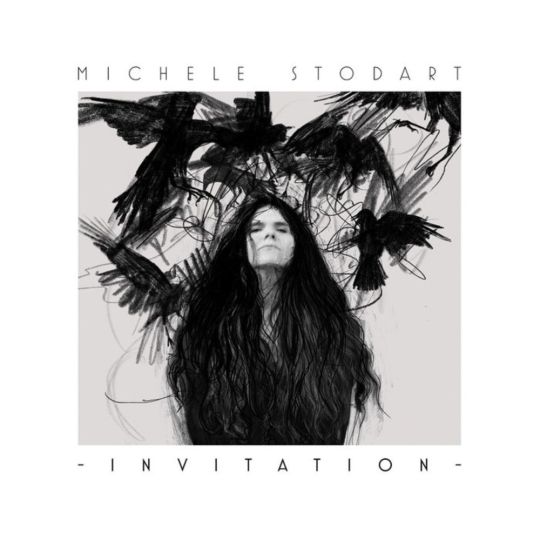
A second one from Hive Mind, and another supermodernist feeling one - ultra sophisticated stuff from the Rio de Janeiro polymath Ricardo Dias Gomes: is it post-rock? Indietronica? Neotropicália? Yes/no/whatever... watch out there's a noisy surprise at the end!
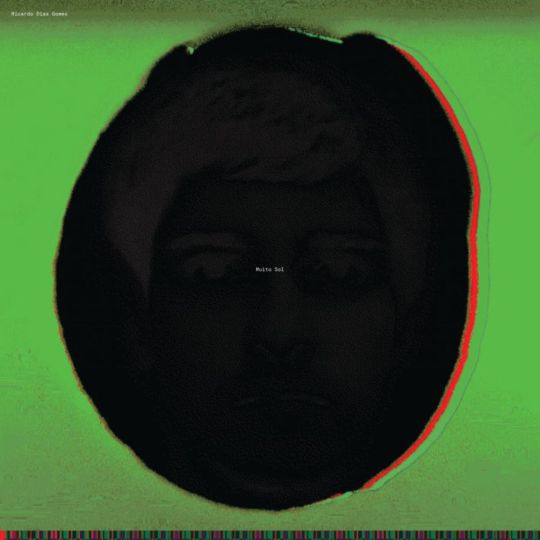
Is it me or is R&B / neo soul wayyyyy more experimental than hip hop at the moment? Like the Tinashe and Janelle albums, this is super short but WOW does Madison McFerrin pack a lot of innovation, emotion and just v.i.b.e.s. into its 27 minutes

Very cleverly structured because it starts quite timid and slight, which it turns out is maybe expectation management? But Andre Three Stacks builds into something that demands repeat plays - and a megastar bringing Don Cherry meets Hiroshi Yoshimura vibes into the world?? It's not quite the masterpiece I'd hoped for but it is GREAT.
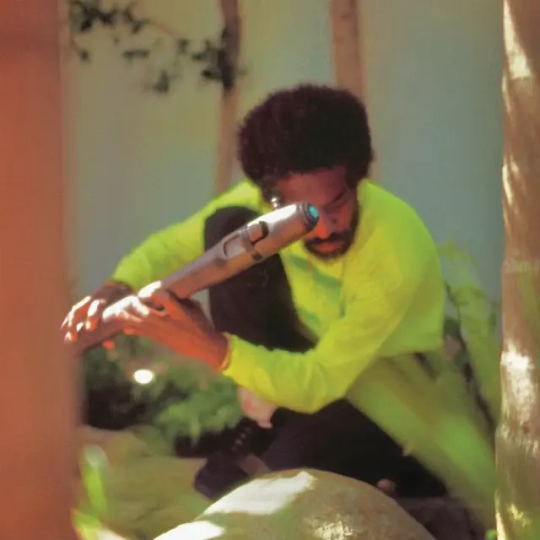
The perfect (paradoxical?) combination of being absolutely true to the unchanging groove of Detroit, but also pushing it forwards sonically... DJ Bone STILL sounds like the future.

A second appearance for the most fun abstract cellist out there, Lucy Railton - this record is really tricky, it feels different from different angles, keeps throwing surprises at you, the proverbial "a lot to unpack"... but it's GREAT.

hinako omori somehow emerges from a wellspring circa 1979-81 when prog synth meandering was feeding into e.g. Kate Bush, Eurythmics, Japan, and then traces through that into 00s post trance pop but it doesn't sound retro? HOW?

Another small but perfectly formed one. Amazing that Ultramarine's elegant, pastoral, ECM-ish house explorations are still so exploratory and moving after all these years - and they fit perfectly on the Blackford Hill label which had an extraordinary year too.
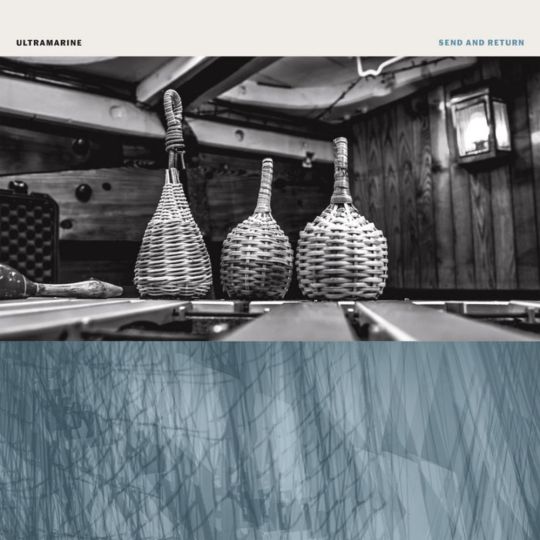
In a year when not a lot of hip hop floated my boat, this was a glorious exception. Kind of odd it didn't get more hype really - Kaytra absolutely on top of his game, partnership with Aminé flows together just like their names, guest spots on point, vibes upon vibes upon vibes (instrumental version is great too!)

David Harrow is the absolute epitome of real craftsmanship honed over years and years - and this album of dub and downtempo tracks with rich layering of singing modular synths is a really magical exercise in world-building.

OK that's that for now, direct link to Part 2 here....
#albums#best of 2023#LPs#vinyl#digital music#dance music#R&B#Rap#Hip hop#Dub#Ambient#Drone#Experimental Music#Neo Soul#Pop#Alt Pop#Indie Music#Techno#detroit techno#Jazz#Brazilian Music#Tropicalia#Bass Music#Footworking#Dubstep#Drum'n'bass#Psychedelia#Inuit Music#Cosmic Music#Congolese Music
4 notes
·
View notes
Text
0 notes
Text
07/12/23 Mondo Radio Playlist
Here's the playlist for this week's edition of Mondo Radio, which you can download or stream here. This episode: Untitled ("Drastic Classicism"), featuring classic no wave and more. If you enjoy it, don't forget to also follow the show on Facebook and Twitter!
Artist - Song - Album
Contortions - I Can't Stand Myself - No New York
Teenage Jesus And The Jerks - The Closet - No New York
DNA - Blonde Red Head - A Taste Of DNA
DNA - New New - A Taste Of DNA
Theoretical Girls - Parlez-Vous Francais - Theoretical Girls
Theoretical Girls - Electronic Angie (Short Version) - Theoretical Girls
Mars - 11,000 Volts - The Complete Studio Recordings NYC 1977-1978
Mars - Helen Forsdale - The Complete Studio Recordings NYC 1977-1978
Y Pants - Beautiful Food - Y Pants
Y Pants - Off The Hook - Y Pants
Judy Nylon And Crucial - Jailhouse Rock - Pal Judy
Judy Nylon And Crucial - The Dice - Pal Judy
ESG - UFO - Dance To The Best Of ESG
The Raybeats - Tone Zone - Guitar Beat
Bush Tetras - Too Many Creeps - Boom In The Night: Original Studio Recordings 1980-1983
Newkirk - I Want My Steak And We're Outta Here - Funk City
James White And The Blacks - White Savages - Off White
James Chance & The Contortions - Disposable You (Live) - Soul Exorcism Redux
Material - Silent Land - Memory Serves
Laurie Anderson - Sweaters - Big Science
Brian Eno + David Byrne - Two Against Three - My Life In The Bush Of Ghosts
Arthur Russell - Wax The Van - World Of Echo
Liquid Liquid - Optimo - Def Jam Recordings 30
Suicide - Rocket USA - Suicide
The Del-Byzanteens With Jim Jarmusch - My Hands Are Yellow (From The Job That I Do) - New York Noise, Vol. 2: Music From The New York Underground 1977-1984
Peter Zummo - Instruments IV: Sevenths - Zummo With An X
Elliott Sharp - Klops Lied (Meatball Song) - Lost In The Stars: The Music Of Kurt Weill
Rhys Chatham - Drastic Classicism - New York Noise, Vol. 2: Music From The New York Underground 1977-1984
Kronos Quartet - Bella By Barlight - Winter Was Hard
Kronos Quartet - Forbidden Fruit - Winter Was Hard
The Golden Palominos - Cookout - The Golden Palominos
The Golden Palominos - Hot Seat - The Golden Palominos
Swans - Stay Here - Filth
Swans - Weakling - Filth
Band Of Susans - Hope Against Hope - The Peel Sessions
Sonic Youth - Expressway To Yr Skull (Live) - Smart Bar - Chicago 1985
0 notes
Text
The AM: June 26, 2023

With the year nearly half-over, this week's AM shares some favourite releases from Jan-June. Low-key jazz, ambient trombones, synth-laden dream pop, subdued post-rock—it's all pretty mellow (go figure) but also rich, inventive, grounding, and above all, worth a listen.
Hope you enjoy it.
Listen on Soundcloud
Stream from CJSW
Other links
Spotify playlist
Tracklist
Hour One:
Salient
Hollie Kenniff • We All Have Places That We Miss
Mass Lossless Interbeing
Eluvium • (Whirring Marvels In) Consensus Reality
Sweltering Drive
Masahiro Takahashi • Humid Sun
We Wept In Turn
Kalia Vandever • We Fell In Turn
The Blank Code Re-Write
Test Card • Channels
Smoke and Ash, Hand in Hand
Yves Malone • A Hello To A Goodbye
Sundog
Nico Georis • Cloud Suites
Vithatten
Golden Ivy • Kammarn
Fin août, début septembre
Faten Kanaan • Afterpoem
Oh Me, Oh My
Lonnie Holley, featuring Michael Stipe • Oh Me, Oh My
Forgetting Another Year
Valiska • Wolf Moon EP
Hour Two:
Dew Damp
Ivan the Tolerable • Black Water/Brown Earth
Sombra del Mar
Edena Gardens • Agar
A Marcha Que o Monte Parou
Pedro Ricardo • Soprem Bons Ventos
New Places
mohs. • Mirage
Way Better Than I Expected
Peter Zummo • Deep Drive 2 +
Akousmatikous
Salami Rose Joe Louis • Akousmatikous
Shin Ramyun
Unknown Mortal Orchestra • V
100 Years
Ryan Bourne • Plant City
The Void
Benoit Pioulard • Eidetic
Pangée
N NAO • L'eau et les rêves
Hour Three:
The World Couldn't See Us
Nabihah Iqbal • Dreamer
Must Be Tears
Lael Neale • Star Eaters Delight
Quail’s Egg
LT Leif • Come Back to Me, But Lightly
A Language Disappears
Zoon • Bekka Ma'iingan
Moon Garden
Arboria • Arboria
Surely Everything's Alright
Sunnsetter • The best that I can be.
The Sons and Daughters of Poor Eternal
ALL HANDS_MAKE LIGHT • Darling the Dawn
All Good Things
Bart • Some Kind of Way
Ligurian Dream
The Ironsides • Changing Light
Kingdom Weather
Spencer Cullum, featuring Yuma Abe • Coin Collection 2
Haffmilch Holiday
Decisive Pink • Ticket to Fame
0 notes
Text
23-January 散財記録
03(tue)
・Matthias Lindermayr / Sequence (2022, used LP)
・Peter Zummo / Dress Code (Don't Look at My Car) (2016, used LP)
・High Places / Original Colors (2011, used LP)
・The Notwist / Pick Up the Phone (2002, used 12inch)
・Indian Ocean / School Bell/Treehouse (1986, used 12inch)
・Serge Gainsbourg / Aux Armes Et Cætera (1979, used LP)
・Tony Snell / Medieval & Latter Day Lays (1973, used LP)
・Isaac Hayes / Theme From the Men/Type Thang (1972, used 7inch)
・Van Morrison / Blue Money/Sweet Thing (1971, used 7inch)
06(fri)
・AmmonContact / New Birth (2005, 2x12inch)
・The Ramsey Lewis Trio / Upendo Ni Pamoja (1972, used LP)
・Jerome Richardson / Going to the Movies (1962, used LP)
07(sat)
・Eri Nagami / どちらかというとそう思う (2022, cassette)
・ザ・なつやすみバンド / 風の谷のナウシカ (2022, used 7inch)
・TWIG EP for Hiraparr Wilson (2021, used 10inch)
・んミィ & ゆめであいましょう / ひかりのうた & おだやかにひそやかに (2019, 7inch)
・Jack Wilson / Spare Key (2013, used LP)
・João Bosco / Galos De Briga (1976, used LP)
09(mon)
・odd eyes / A love supreme for our brilliant town (2015, used 7inch+CD)
・Óbó / Innhverfi (2014, used LP)
・Loren Connors / Airs (1999, used LP)
・Solid Eye / It's a Salon (1996, used 7inch)
・Love of Life Orchestra / Geneva (1980, used LP)
・Maurice Jarre / Die Blechtrommel (1979, used LP)
12(fri)
・中村祐子 / 私を連れていって (2020, used CD)
・蓮沼執太 / CC OO (2012, used 4CD)
13(fri)
・Brian Chase / Drums & Drones II (2018, used LP)
・DATE OF BIRTH / AROUND+AROUND (1985, used 10inch)
・Bossa Combo / Ambiance D'Ete (1981, used LP)
14(sat)
・Stargaze / Deerhoof Chamber Variations (2015, used 12inch)
・Julian Lynch / Terra (2011, used LP)
・John Hughes / Scarlet Diva - Original Motion Picture Soundtrack (2000, used LP)
・The Silver Apples / Fractal Flow/Lovefingers (1996, used 7inch)
・Harvie Swartz / Underneath It All (1982, used LP)
15(sun)
・中尾勘二 / Record of Recording 1967-1978 (2022, CD-R)
・中尾勘二 / My Orver Dubbing Life 2019-2022 (2022, CD-R)
20(fri)
・David Byrne / Music For The Knee Plays (1985, used LP)
・Blood, Sweat & Tears / Lisa, Listen to Me (1971, used 7inch)
・The Firehouse 5 Plus 2 / The Firehouse Five Story, Vol. 1 (1955, used 4x7inch)
21(sat)
・Esperanza de OTO 音のエスペランサ (2013, used LP)
・The King Of Luxembourg / "Sir" (1988, used LP)
・Mama Cass / Mama's Big Ones: Her Greatest Hits (1970, used LP)
23(mon)
・Vicktor Taiwò / Joy Comes in Spirit (2018, used 2LP)
・Chick Corea, Miroslav Vitous, Roy Haynes / Trio Music (1982, used 2LP)
・Carmine Appice / Carmine Appice (1981, used LP)
・Nat Adderley / You, Baby (1968, used LP)
・The Monkees / Pisces, Aquarius, Capricorn & Jones Ltd. (1967, used LP)
24(tue)
・Justin Wright / A Really Good Spot (2022, used LP)
28(sat)
・Professor Brian Oblivion / The Dark Realities of the Moment (2011, used LP)
・Beneath Fire & Smoke / The Iceberg Waltz (2007, used 10inch)
・Sukpatch / Honky-Tonk Operation E.P. (1998, used 12inch)
29(sun)
・Errol's Compilation (2002, used 2x10inch)
・Chari Chari / Keep on Flowin' EP (1998, used 12inch)
・(Garden Of Delights Presents...) Seek Refuge... (From Your Intolerable Situation) (1995, used LP)
・The Helicopters / The Helicopters (1984, used LP)
・Manos Hadjidakis / Never On Sunday (Original Sound Track Music) (1960, used LP)
0 notes
Text
Alan Licht’s Minimal Top Ten List #4
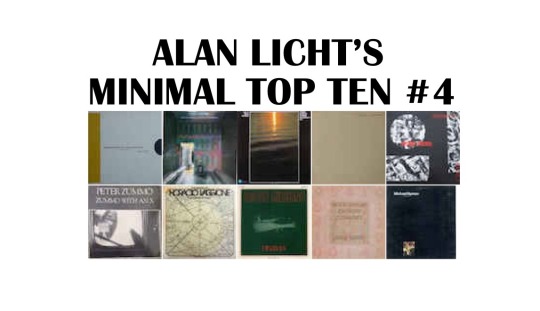
A few weeks ago, near the beginning of the COVID-19 pandemic, my friend Mats Gustafsson sent out a mass email encouraging people to send him record lists to post on the “Discaholics” section of his website--top tens, favorite covers, anything. I immediately thought of the first 3 Minimal Top Ten lists I did (now found online here) back in 1995, 1997, and 2007 respectively, for the fanzine Halana (the first two) and Volcanic Tongue’s website (the third), and sent them to him. Those articles have sort of taken on a life of their own, and I still see them referenced as the albums get reissued and so on. Occasionally people ask me if I’d ever do another one, and looking at all three again made me think now is the hour. I started writing this in the midst of the lockdown, and the drastic reductions in people’s way of life—the restriction of any activity outside the home to the bare essentials, the relative stasis of life in quarantine, even the visual stasis of a Zoom meeting—make revisiting Minimal music, with its aesthetic of working within limitations and hallmarks of repetition and drones, somehow timely as well.
The original lists were never meant to represent “the best” Minimal albums: they were ones that were rare and in some cases surpass, in my opinion, more widely available releases by the same artist and/or better known examples of the genre. Some were records that hadn’t been classified as Minimalist but warranted consideration through that lens. Likewise, the lists aren’t meant to be ranked within themselves, or in comparison to each other; the first record on any of the lists isn’t necessarily vastly preferable to the last, and this fourth list is not the bottom of the barrel, by any stretch. In some cases the present list has records I’ve discovered since 2007; others are records I’ve known for quite a while but haven’t included before for one reason or another. I’ve also made an addendum to selected entries on the first three lists, which have become fairly dated in terms of what is currently available by many of the artists, and to account for some of the significant archival releases in the 25 years since I first compiled them.
Unlike the mid-90s, most if not all of these records can be heard and/or purchased online, whether they’re up on YouTube or available for sale on Discogs. So finding them will be easier than before (although I haven’t included links to any of the titles as a small tribute to the legwork involved in tracking records down in olden tymes), but hopefully the spirit of sharing knowledge and passions that drove my previous efforts, forged in the pre-internet fanzine world, hasn’t been rendered totally redundant by the 24/7 onslaught of virtual note-comparing in social media.
1. Simeon ten Holt Canto Ostinato (various recordings): This was the most significant discovery for me in the last decade, a piece with over one hundred modules to be played on any instrument but mostly realized over the years with two to four pianos. I first encountered a YouTube live video of four pianists tackling it over the course of 90 minutes or so, then bought a double CD on Brilliant Classics from 2005, also for four pianos, that runs about 2 and half hours. The original 3LP recording on Donemus, from 1984, lasts close to 3 hours. It’s addictively listenable, very hypnotic in that pulsed, Steve Reich “Piano Phase”/”Six Pianos” kind of way, with lots of recurring themes (which differentiates it from Terry Riley’s “In C,” its most obvious structural antecedent). Composed over the span of the 70s, as with Roberto Cacciapaglia’s Sei Note in Logica, it’s an example of someone contemporaneously taking the ball from Reich or Riley and running with it. Every recording I’ve heard has been enjoyable, I’ve yet to pick a favorite.
2. David Borden Music for Amplified Keyboard Instruments (Red Music, 1981)
3. Mother Mallard’s Portable Masterpiece Co. Like a Duck to Water (Earthquack, 1976): These were some of my most cherished Minimal recordings when I was a teenager in the mid-80s, and are still not particularly well-known; they’re probably the biggest omission in the previous lists (at least from my perspective). Borden formed Mother Mallard, supposedly the first all-synthesizer ensemble, as a trio in the late 60s, although there’s electric piano on the records too. He went on to do music under his own name that hinged on the multi-keyboard Minimalism-meets-Renaissance classical concept he first explored with Mother Mallard, as exemplified by his 12-part series “The Continuing Story of Counterpoint” (a title inspired by both Philip Glass’ “Music in Twelve Parts” and the Beatles’ “The Continuing Story of Bungalow Bill”). I first heard Parts 6 & 9 of “Continuing Story” (from Music for Amplified Keyboard Instruments) on Tim Page’s 1980s afternoon radio show on WNYC, and bought the Mother Mallard LPs (Like A Duck is the second, the first is self-titled) from New Music Distribution Service soon after. I mail-ordered the Borden album from Wayside Music, which had cut-out copies, maybe a year later (c. 1986). I wasn’t much of a synth guy, but I loved the propulsive, rapid-fire counterpoint and fast-changing, lyrical melodies found on these records. “C-A-G-E Part 2,” which occupies side 2 of the Mother Mallard album and utilizes only those pitches, has to be a pinnacle of the Minimal genre. Interestingly, Borden claims to not really be able to “hear” harmony and composes each part of these (generally) three-part inventions individually, all the way through. The two-piano “Continuing Story of Counterpoint Part Two” on the 1985 album Anatidae is also beloved by me, and there was an archival Mother Mallard CD called Music by David Borden (Arbiter, 2003) that’s worth hearing.
4. Charles Curtis/Charles Curtis Trio: Ultra White Violet Light/Sleep (Beau Rivage, 1997): Full disclosure: Charles is a long-time friend, but this record seems forgotten and deserves another look, especially in light of the long-overdue 3CD survey of his performances of other composers’ material that Saltern released last year. This was a double album of four side-long tracks, conceived with the intent that two sides could be played simultaneously, in several different configurations; two of them are Charles solo on cello and sine tones, the others are with a trio and have spoken vocals and rock instrumentation, with cello and the sine tones also thrown into the mix. (I’ve never heard any of the sides combined, although now it would probably be easily achieved with digital mixing software.) The instrumental stuff is the closest you can come to hearing Charles’ beautiful arrangement of Terry Jennings’ legendary “Piece for Cello and Saxophone,” at least until his own recording of it sees the light of day; the same deeply felt cello playing against a sine tone drone. And it would be interesting to see what Slint fans thought of the trio material. Originally packaged in a nifty all-white uni-pak sleeve with a photo print pasted into the gatefold, it was reissued with a different cover on the now-defunct Squealer label on LP and CD but has disappeared since then. Stellar.
5. Arthur Russell Instrumentals 1974 Vol. 2 (Another Side/Crepuscule, 1984)
6. Peter Zummo Zummo with an X (Loris, 1985): Arthur Russell has posthumously developed a somewhat surprising indie rock audience, mostly for his unique songs and singing as well as his outré disco tracks. But he was also a modern classical composer, with serious Minimal cred—he’s on Jon Gibson’s Songs & Melodies 1973-1977 (see addendum), and played with Henry Flynt and Christer Hennix at one point; his indelible album of vocal and cello sparseness, World of Echo, was partially recorded at Phill Niblock’s loft and of course his Tower of Meaning LP was released on Glass’s Chatham Square label. He’s the one guy in the 70s and 80s (or after, for that matter) who connected the dots between Ali Akbar Khan, the Modern Lovers, Minimalism, and disco as different forms of trance music (taken together, both sides of his disco 12” “In the Light of the Miracle,” which total nearly a half-hour, could arguably be considered one of his Minimalist compositions). Recorded in 1977 & 1978, Instrumentals is an important signpost of the incipient Pop Minimalism impulse, and the first track is a pre-punk precursor to Rhys Chatham and Glenn Branca’s appropriations of the rock band format to pursue Minimal pathways (Chatham is one of the performers in that first piece). The rest, culled from a concert at the Kitchen, features long held tones from horns and strings and is quite graceful, if slightly undercut by Arthur’s own slightly jarring, apparently random edits. [Audika’s 2006 reissue, as part of the double CD First Thought Best Thought, includes a 1975 concert that was slated to be Instrumentals Vol. 1, which shows an even more specific pop/rock/Minimal intersection]. Zummo was a long-term collaborator of Russell’s and his album, which Arthur plays on, is a must for Russell aficionados. The first side is made up of short, plain pieces that repeat various simple intervals and are fairly hard-core Minimalism, but “Song IV,” which occupies all of side two, is like an extended, jammy take on Russell’s disco 12” “Treehouse” and has Bill Ruyle on bongos, who also played on Instrumentals as well as with Steve Reich and Jon Gibson. A recently unearthed concert at Roulette from 1985 is a further, and especially intriguing, example of Russell’s blending of Minimalism and song form. (That same year Arthur played on Elodie Lauten’s The Death of Don Juan--another record I first encountered via Tim Page’s radio show--which I included on Top Ten #3; Lauten as well as Zummo played on the Russell Roulette concert, as their website alleges).
7. Horacio Vaggione La Maquina de Cantar (Cramps, 1978): Another one-off from the late 70s, and yet more evidence of how Minimalism had really caught on as a trend among European composers of the time. Vaggione had a previous duo album with Eduardo Polonio under the name It called Viaje that was noisier electronics, and he went on to do computer music that was likewise more traditionally abstract. But on this sole effort for the Italian label Cramps, as part of their legendary Nova Musicha series, he went for full-on tonality. The title track is like the synth part of “Who Are You” extended for more than fifteen minutes and made a bit squishier; but side 2, “Ending”--already mentioned in the entry on David Rosenboom’s Brainwave Music in Top Ten #3--is my favorite. Kind of a bridge between Minimalism and prog, and a little reminiscent of David Borden’s multiple-synth counterpoint pieces, for the first ten minutes he lingers on one vaguely foreboding arpeggiated chord, then introduces a fanfare melody that repeats and builds in harmonies and countermelodies for the remainder of the piece. Great stuff, as Johnny Carson used to say.
8. Costin Miereanu Derives (Poly-Art, 1984): Miereanu is French composer coming out of musique concrete. Unlike some of the albums on these lists, both sides/pieces on Derives are superb, comprised of long drones with flurries of skittering electronic activity popping up here and there. Also notable is the presence of engineers Philip Besomes and Jean-Louis Rizet, responsible for Pôle, the great mid-70s prog double album that formed the basis of Graham Lambkin’s meta-meisterwork Amateur Doubles. I discovered this record via the old Continuo blog; Miereanu has lots of albums out, most of which I haven’t heard, but his 1975 debut Luna Cinese, another Cramps Nova Musicha item, is also estimable, although less Minimal.
9. Mikel Rouse Broken Consort Jade Tiger (Les Disques du Crepuscule, 1984): Rouse was a major New Music name in the 80s, as was Microscopic Septet saxist Philip Johnston, who plays here. Dominated by Reichian repeated fills that accentuate the odd time signatures as opposed to an underlying pulse, this will sound very familiar to anyone acquainted with Nik Bärtsch’s Ronin albums on ECM, which use the same general idea but brand it “zen funk” and cater more to the progressive jazz crowd rather than New Music fans, if we can be that anachronistic in our terminology. Jade Tiger also contrasts nicely with Wim Mertens’ more neo-Romantic contemporaneous excursions on Crepuscule. Rouse later performed the admirable (and daunting) task of cataloging Arthur Russell’s extensive tape archive for the preparation of Another Thought (Point Music, 1994)
10. Michael Nyman Decay Music (Obscure, 1976): Known for his soundtracks to Peter Greenaway films, and his still-peerless 1974 book Experimental Music: Cage and Beyond (where I, Jim O’Rourke, and doubtless many other intrepid teenage library goers learned of the Minimalists, Fluxus, AMM, and lots of other eternal avant heroes), Nyman is sometimes credited with coining the term “Minimal music” as well, in an early 70s article in The Spectator. Decay Music was produced by Brian Eno for his short-lived but wonderful Obscure label. The first side, “1-100,” was also composed for a Greenaway film, and has one hundred chords played one after another on piano, each advancing to the next once the sound has decayed from the previous chord (hence the album title). For all its delicacy and silences, you’re actually hearing three renditions superimposed on one another, which occasionally makes for some charming chordal collisions (reminiscent of the cheerfully clumsy, subversive “variations” of Pachelbel’s “Canon in D major” on Eno’s own Discreet Music, the most celebrated Obscure release). This is process music at its most fragile and incandescent. In hindsight it may have also been an unconscious influence on the structure of my piece “A New York Minute,” which lines up a month’s worth of weather reports from news radio, edited so that one day’s forecast follows its prediction from the previous day. I’ve never found the album’s other piece, “Bell Set No. 1,” to be quite as compelling, and Nyman’s other soundtrack work doesn’t hold much interest for me, but I’ve often returned to this album.

11. J Dilla Donuts (Stones Throw, 2006): One more for the road. Rightfully acclaimed as a masterpiece of instrumental hip hop, I have to confess I only discovered Donuts while reading Questlove’s 2013 book Mo’ Meta Blues, where he compared it to Terry Riley. The brevity of the tracks (31of ‘em in 44 minutes) and the lack of single-mindedness make categorizing Donuts as a Minimal album a bit of a stretch, but Questlove’s namecheck makes a whole lot of sense if you play “Don’t Cry” back to back with Riley’s proto-Plunderphonic “You’re Nogood,” and “Glazed” is the only hip hop track to ever remind me of Philip Glass. Plus the infinite-loop sequencing of the opening “Outro” and concluding “Intro” make this a statement of Eternal Music that outstrips La Monte Young and leaves any locked groove release in the proverbial dust. There isn’t the space here to really explore how extended mixes, all night disco DJ sets, etc. could be encountered in alignment with Minimalism, although I would steer the curious towards Pete Rock’s Petestrumentals (BBE, 2001), Larry Levan’s Live at the Paradise Garage (Strut, 2000), and, at the risk of being immodest, my own “The Old Victrola” from Plays Well (Crank Automotive, 2001). On a (somewhat) related note I’d also point out Rupie Edwards’ Ire Feelings Chapter and Version (Trojan, 1990) which collects 16 of the producer/performer’s 70s dub reggae tracks, all built from the exact same same rhythm track--mesmerizing, even by dub’s trippy standards.
Addendum:
Tony Conrad: “Maybe someday Tony’s blistering late 80s piece ‘Early Minimalism’ will be released, or his fabulous harmonium soundtrack to Piero Heliczer’s early 60s film The New Jerusalem.” That was the last line of my entry on Tony’s Outside the Dream Syndicate in the first Top Ten list in 1995, and sure enough, Table of the Elements issued “Early Minimalism” as a monumental CD box set in 1997 and released that soundtrack as Joan of Arc in 2006 (it’s the same film; I saw it screened c. 1990 under the name The New Jerusalem but it’s more commonly known as Joan of Arc). Tony releases proliferated in the last twenty years of his life, which was heartening to see; I’d particularly single out Ten Years Alive on the Infinite Plain (Superior Viaduct, 2017), which rescues a 1972 live recording of what is essentially a prototype for Outside played by Tony, Rhys Chatham, and Laurie Spiegel (Rhys has mentioned his initial disgruntlement upon hearing Outside, as it was the same piece that he had played with Tony, i.e. “Ten Years Alive,” but he found himself and Laurie replaced by Faust!) and an obscure compilation track, “DAGADAG for La Monte” (on Avanto 2006, Avanto, 2006), where he plays the pitches d, a, and g on violin, loops them over and over , and continually re-harmonizes them electronically--really one of his best pieces.
Terry Riley: The archival Riley CDs that Cortical Foundation issued in the 90s and early 00s don’t seem to be in print, but I feel they eclipse Reed Streams (reissued by Cortical as part of that series) and are crucial for fans of his early work, especially the live Poppy Nogood’s Phantom Band All Night Flight Vol. 1, an important variant on the studio take, and You’re Nogood (see Dilla entry above). These days I would also recommend Descending Moonshine Dervishes (Kuckuck, 1982/recorded 1975) over Persian Surgery Dervishes (Shandar, 1975), which I mentioned in the original entry on Reed Streams in the first Top Ten; a lot of the harmonic material in Descending can also be heard in Terry’s dream-team 1975 meeting with Don Cherry in Köln, which has been bootlegged several times in the last few years. Finally, Steffen Schleiermacher recorded the elusive “Keyboard Study #1” (as well as “#2,” which had already seen release in a version by Germ on the BYG label and as “Untitled Organ” on Reed Streams), albeit on a programmed electronic keyboard, on the CD Keyboard Studies (MDG, 2002). As you might expect it’s a little synthetic-sounding, but it also has a weird kinetic edge (imagine the “Baba O’Riley” intro being played on a Conlon Nancarrow player piano) that’s lacking in later acoustic piano renditions recorded by Gregor Schwellenbach and Fabrizio Ottaviucci. But any of these versions is rewarding for those interested in Riley’s early output.
Henry Flynt, Charlemagne Palestine: A few of the artists on that first Top Ten list went from being sorely under-documented to having a plethora of material on the market, and Henry and Charlemagne are at the top of the heap. I stand by You Are My Everlovin, finally reissued on CD by Recorded in 2001, as Henry’s peak achievement, but I’m also partial to “Glissando,” a tense, feverish raga drone from 1979 that Recorded put out on the Glissando No. 1 CD in 2011. Charlemagne’s Four Manifestations On Six Elements double album still holds up well, as does an album of material initially recorded for it, Arpeggiated Bösendorfer and Falsetto Voice (Algha Marghen, 2017). The Strumming Music LP on Shandar is a definitive performance, and best heard as an unbroken piece on the New Tone CD reissue from 1995. Godbear (CD on Barooni, vinyl on Black Truffle), originally recorded for Glenn Branca’s Neutral label (which had also scheduled a Phill Niblock release before going belly-up), has 1987 takes of “Strumming Music” and two other massive pieces that date from the late 70s, “Timbral Assault” and “The Lower Depths”; Algha Marghen released a vintage full-length concert of the latter as a triple CD.
Steve Reich: Not a particularly rare record, but his “Variations on Winds, Strings and Keyboards,” a 1979 piece for orchestra on a 1984 LP issued by Phillips (paired with an orchestral arrangement of John Adams’ “Shaker Loops”), is often overlooked among the works from his “golden era” and I’d frankly rate it as his best orchestral piece.
Phill Niblock, Eliane Radigue: As with Henry and Charlemagne, after a slow start as “recording artists” loads of CDs by these two have appeared over the last twenty years. Phill and Eliane’s music was never best served by the vinyl format anyway—you won’t find a lackluster release by either composer, go to it.
Jon Gibson: I called “Cycles,” from Gibson’s Two Solo Pieces, “one of the ultimate organ drones on record” in the first Top Ten list, and it remains so, but Phill Niblock’s”Unmounted/Muted Noun” from 2019′s Music for Organ ought to sit right beside it. Meanwhile, Superior Viaduct’s recent Gibson double album Songs & Melodies 1973-1977 collects some great pieces from the same era as Two Solo Pieces, with players including Arthur Russell, Peter Zummo, Barbara Benary, and Julius Eastman.
John Stevens: In Top Ten #2 I mentioned John Stevens’ presence on the first side of John Lennon & Yoko Ono’s Life With the Lions; the Stevens-led Spontaneous Music Orchestra’s For You To Share (1973) documents his performance pieces “Sustained Piece” and “If You Want to See A Vision,” where musicians and vocalists sustain tones until they run out of breath and then begin again, which result in a highly meditative and organic drone/sound environment. In my early 00′s Digger Choir performances at Issue Project Room we did “Sustained Piece,” and Stevens’ work was a big influence on conceptualizing those concerts, where the only performers were the audience themselves. The CD reissue on Emanem from 1998 added “Peace Music,” an unreleased studio half-hour studio cut with a similar Gagaku--meets--free/modal jazz vibe. I also mentioned “Sustained Piece” in my liner notes to Natural Information Society’s Mandatory Reality too, if that helps as a point of reference.
Anthony Moore: Back in ’97 I wondered “How and why Polydor was convinced to release these albums [Pieces from the Cloudland Ballroom and Scenes from the Blue Bag] is beyond me (anyone know the story)?” That mystery was ultimately solved by Benjamin Piekut in his fascinating-even-if-you-never-listen-to-these-guys book Henry Cow: The World is A Problem (Duke University Press, 2019)—it turns out it was all Deutsche Gramophone’s idea!
Terry Jennings, Maryanne Amacher, Julius Eastman--“Three Great Minimalists With No Commercially Available Recordings” (sidebar from Minimal Top Ten list #2): Happily this no longer applies to these three, although Terry and Maryanne are still under-represented. One archival recording of Jennings and Charlotte Moorman playing a short version of “Piece for Cello and Saxophone” appeared on Moorman’s 2006 Cello Anthology CD box set on Alga Marghen, and he’s on “Terry’s Cha Cha” on that 2004 John Cale New York in the 60s Table of the Elements box too. John Tilbury recorded five of his piano pieces on Lost Daylight (Another Timbre, 2010) and Charles Curtis’ version of “Song” appears on the aforementioned Performances and Recordings 1998-2018 triple CD.
Whether or not Maryanne should really be considered a Minimalist (or a sound artist, for that matter) is, I guess, debatable, but I primarily see her as the unqualified genius of the generation of composers who emerged in the post-Cage era, and the classifications ultimately don’t matter—remember she was on those Swarm of Drones/ Throne of Drones/ Storm of Drones ambient techno comps in the 90s, and I’d call her music Gothic Industrial if it would get more people to check it out (and that might be fun to try, come to think of it). She made a belated debut with the release of the Sound Characters CD on Tzadik in 1998, an event I found significant enough to warrant pitching an interview with her to the WIRE, who agreed—it was my first piece for them. Her music was/is best experienced live (the Amacher concert I saw at the Performing Garage in 1993 is still, almost three decades later, the greatest concert I’ve ever witnessed) but that Tzadik CD is reasonably representative, and there was a sequel CD on Tzadik in 2008. More recently Blank Forms issued a live recording of her two-piano piece “Petra” (a concert I also attended, realizing when I got there that it was in the same Chelsea church where Connie Burg, Melissa Weaver and I recorded with Keiji Haino for the Gerry Miles with Keiji Haino CD). While it’s somewhat anomalous in Amacher’s canon, making a piece for acoustic instruments available for home consumption would doubtless have been more palatable to the composer herself, who rightly felt that CDs and LPs didn’t do justice to the extraordinary psychoacoustic phenomena intrinsic to her electronic music. “Petra” is more reminiscent of Morton Feldman than anything else, with a few passages that could be deemed “minimal.” Some joker posted a 26-minute, ancient lo-fi “bootleg” (their term) recording of her “Living Sound, Patent Pending” piece from her Music for Sound-Joined Rooms installation/performance series on SoundCloud, which is a little like looking at a Xerox of a Xerox of a photo of the Taj Mahal; but you can still visit the Taj Mahal more easily than hearing this or any of Maryanne’s work in concert or in situ, so sadly, it’s better than nothing (and longer than the 7 minute edit of the piece on the Ohm: Early Gurus of Electronic Music CD from 2000).
A few years after Top Ten #2 I was on the phone with an acquaintance at New World Records, who told me he was listening to a Julius Eastman tape that they were releasing as part of a 3CD set. Say what?!?!? Unjust Malaise appeared shortly thereafter and was a revelation. Arnold Dreyblatt had sent me a live tape some time before then of an Eastman piece labeled “Gangrila”—that turned out to be “Gay Guerrilla,” and is surely one of my five favorite pieces of music in existence (the tape Arnold sent was from the 1980 Kitchen European tour and I consider it to be a more moving performance than the Chicago concert that appears on the CD, although it’s an inferior recording). The other multiple piano pieces on Unjust Malaise more than lived up to the descriptions of Eastman performances that I’d read. The somewhat berserk piano concert I mentioned in that entry seems similar to another live tape issued as The Zurich Concert (New World, 2017), and “Femenine,” a piece performed by the S.E.M. Ensemble, came out on Frozen Reeds in 2016. Eastman’s rediscovery is among the most vital and gratifying developments of recent music history--kudos must be given to Mary Jane Leach, herself a Minimalist composer, for diligently and doggedly tracking down Eastman’s recordings and archival materials and bringing them to the light of day.
The Lost Jockey—I was unaware of any releases by this group besides their Crepuscule LP until I stumbled onto a self-titled cassette from 1983 on YouTube. Like the album, the highlight is a piece by Orlando Gaugh--an all-time great Philip Glass rip-off, “Buzz Buzz Buzz Went the Honeybee,” which has the amusing added bonus of having the singers intoning the rather bizarre title phrase as opposed to Glassian solfège. Also like the album, he rest of the cassette is so-so Pop Minimalism.
Earth: Dylan Carlson keeps on keepin’ on, and while I can’t say I’ve kept up with him every step of the way, usually when I check in I’m glad I did. However I’d like to take this opportunity to humbly disavow the snarky comments about Sunn 0))) I made in this entry in Top Ten list #3. Those were a reflection of my general aversion to hype, which was surrounding them at the time, and of seeing two shows that in retrospect were unrepresentative (I was thunderstruck by a later show I saw in Mexico City in 2009). Stephen O’Malley has proven to be as genuinely curious, dedicated and passionate about drone and other experimental music as they come, and the reissue of the mind-blowing Sacred Flute Music from New Guinea on his Ideologic Organ label is a good reminder of how rooted Minimalism is in ethnic music, and how almost interchangeable certain examples of both can be.
And while we’re in revisionist mode, let’s go full circle all the way back to the very first sentence of the introduction to the first Minimal Top Ten: “I know what you’re thinking: ECM Records, New Age, Eno ambients, NPR, Tangerine Dream. Well forget all that shit.” Hey, that stuff’s not so bad! I was probably directing that more at the experimental-phobic indie rock folks I encountered at the time, and expressing a lingering resentment towards the genre-confusion of the 80s (i.e. having dig through a bunch of Kitaro records in the New Age bins in hopes of finding Reich, Riley, or Glass; even Loren Mazzacane got tagged New Age once in a while back then, believe it or not), which probably hindered my own discovery of Minimalism. What can I say, I’m over it!
Copyright © 2020 Alan Licht. All rights reserved. Do not repost without permission.
#minimalism#minimal top ten#simeon ten holt#david borden#mothermallard#charles curtis#arthur russell#Peter zummo#horacio vaggione#costin miereanu#Mikel rouse#michael nyman#tony conrad#terry riley#henry flynt#charlemagne palestine#steve reich#phill niblock#eliane radigue#anthony moore#terry jennings#maryanne amacher#julius eastman#the lost jockey#dylan carlson#j dilla#pete rock#questlove#larry levan#donna summer
32 notes
·
View notes
Link
4 notes
·
View notes
Text
Peter Zummo, "Highway Brain Planet (Credits)"
0 notes
Text
A-T-2 238 The Necessaries - Event Horizon
The legend goes Arthur Russell abruptly quits The Necessaries by jumping out of the van at the mouth of the Holland Tunnel in New York, while on the way to an important gig. Before he did that though there was 1.5 albums and a single he contributed too. Long time Arthur Russell collaborator Ernie Brookes (bassist for The Modern Lovers) convinces Arthur to join them in 1981. If you know the Arthur Russell compilation Love Is Taking Over Me, Ernie Brookes plays on nearly every track on that, another Arthur Russell collaborator Peter Zummo is brought in to play on the album, Brookes, Zummo, and Russell had been in The Flying Hearts together. Both Big Sky and Event Horizon are produced by Bob Blank at Blank Tapes. Bob Blank is engineer in the studio for a lot of Arthur Russell's disco and experimental output. Lola who releases Wax The Van co-written and performed by Arthur Russell is Bob Blank's wife. On track Driving And Talking At The Same Time Arthur Russell's keyboard is reminiscent of Is It All Over My Face... although more power pop
I think there's a valid case for comparison with early REM
"Event Horizon represents the partial overhaul given to The Necessaries’ first record Big Sky (1981). Renamed and relaunched in 1982, The New York Rocker described the revised LP as benefitting from “some shuffling, some trimming of deadweight and the setting of real gems in their place."" Be With Records remastered and reissued the album in 2017 https://www.bewithrecords.com/products/the-necessaries-event-horizon-lp
On the Run
youtube
Driving and Talking at the Same Time
youtube
The Finish Line
youtube
#1982#the necessaries#arthur russell#ernie brooks#bob blank#new wave#power pop#new york#usa#everyday#80s music#record collector
4 notes
·
View notes
Video
youtube
1/1/17 Kicked off the New Years with attending the St Marks Poetry Project Marathon Reading at St Marks Church. With over 100 artists performing, some of the participants I caught reading poems or performing music in one to seven minute sets included Eileen Myles, Hafizah Geter, the legendary John Giorno, Nick Hallett, Joseph Keckler, Jack Ferver, Pamela Sneed, a dance piece by Yoshiko Chuma, 94 years young Jonas Mekas, Steve Earle, Thurston Moore, Lee Ranaldo, Elliott Sharp, Tammy Faye Starlight, Tony Towle, Ed Askew, Ernie Brooks with Peter Zummo and the great Anne Waldman,
#St Marks Poetry Project#Eileen Myles#Hafizah Geter#John Giorno#Nick Hallett#Joseph Keckler#Jack Ferver#Pamela Sneed#oshiko Chuma#Jonas Mekas#Steve Earle#Thurston Moore#Lee Ranaldo#Elliott Sharp#Tammy Faye Starlight#Tony Towle#Ed Askew#Ernie Brooks#Peter Zummo#Anne Waldman
10 notes
·
View notes
Photo

Arthur Russell - Roulette, Brooklyn, New York, March 2, 1985
This one popped up late last year with little fanfare, but it started making the rounds only recently. A full set of mid-80s Arthur Russell, live at Roulette, one NYC’s key new music venues. It is amazing, a dream come true, every step is moving me up. The details:
The influential and profoundly brave cross-genre artist (1951-1992) presented “The Deer In The Forest,” and other extended vocal compositions with his ubiquitous amplified cello. With Peter Zummo, trombone, and possibly Elodie Lauten or Steven Hall on Casio keyboard. Considered early versions of songs that became more focused later. For example, Each Step Is Moving (around 7 minutes in), is substantially This Is How We Walk On The Moon, which wasn’t released until 1994, posthumously. In this concert Russell was experimenting with repeated phrases and lines, as if testing them out, which likely emerged later in more developed versions.
147 notes
·
View notes
Text
08/17/22 Mondo Radio Playlist
Here's the playlist for this week's edition of Mondo Radio, which you can download or stream here. This episode: "11,000 Volts", featuring classic no wave and more. If you enjoy it, remember to also follow the show on Facebook and Twitter!
Artist - Song - Album
Contortions - I Can't Stand Myself - No New York
Teenage Jesus And The Jerks - The Closet - No New York
DNA - Blonde Red Head - A Taste Of DNA
DNA - New New - A Taste Of DNA
Theoretical Girls - Parlez-Vous Francais - Theoretical Girls
Theoretical Girls - Electronic Angie (Short Version) - Theoretical Girls
Mars - 11,000 Volts - The Complete Studio Recordings NYC 1977-1978
Mars - Helen Forsdale - The Complete Studio Recordings NYC 1977-1978
Y Pants - Beautiful Food - Y Pants
Y Pants - Off The Hook - Y Pants
Judy Nylon And Crucial - Jailhouse Rock - Pal Judy
Judy Nylon And Crucial - The Dice - Pal Judy
ESG - UFO - Dance To The Best Of ESG
The Raybeats - Tone Zone - Guitar Beat
Bush Tetras - Too Many Creeps - Boom In The Night: Original Studio Recordings 1980-1983
Novak - Velveeta - Tention Hello
James White And The Blacks - White Savages - Off White
James Chance & The Contortions - Disposable You (Live) - Soul Exorcism Redux
Material - Silent Land - Memory Serves
Laurie Anderson - Sweaters - Big Science
Arthur Russell - Wax The Van - World Of Echo
Liquid Liquid - Optimo - Def Jam Recordings 30
Suicide - Rocket USA - Suicide
The Del-Byzanteens With Jim Jarmusch - My Hands Are Yellow (From The Job That I Do) - New York Noise, Vol. 2: Music From The New York Underground 1977-1984
Peter Zummo - Instruments IV: Sevenths - Zummo With An X
Elliott Sharp - Klops Lied (Meatball Song) - Lost In The Stars: The Music Of Kurt Weill
Rhys Chatham - Drastic Classicism - New York Noise, Vol. 2: Music From The New York Underground 1977-1984
Kronos Quartet - Bella By Barlight - Winter Was Hard
Kronos Quartet - Forbidden Fruit - Winter Was Hard
The Golden Palominos - Cookout - The Golden Palominos
The Golden Palominos - Hot Seat - The Golden Palominos
Swans - Stay Here - Filth
Swans - Weakling - Filth
Band Of Susans - Hope Against Hope - The Peel Sessions
Sonic Youth - Expressway To Yr Skull (Live) - Smart Bar - Chicago 1985
1 note
·
View note